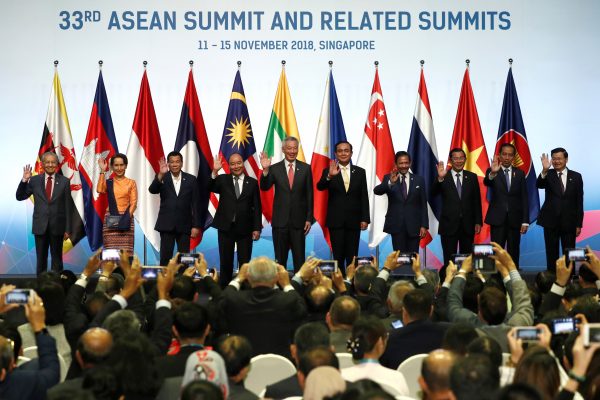Yet, despite the pageantry, nothing much appears to have changed.
ASEAN still struggles to exert its influence in the South China Sea despite the agreement on a draft code of conduct. Its members are deeply split about how to handle a rising China and a declining United States. ASEAN’s own commitments are widely violated by the same members that created them. Member states are increasingly looking beyond ASEAN as they seek to take on a more global role. There is even evidence of an arms race within Southeast Asia. This suggests that even the most traditional of ASEAN’s aims, regional peace, is under threat.
Such apparent failures and contradictions prompt the question of what role ASEAN plays in regional affairs. The easy answer is that it plays almost no role and is obsolete for the world in which it finds itself. Yet this assessment ignores what is arguably the most important thing about ASEAN — that the politically savvy elites of the region continue to invest their time, prestige and often-limited resources of their countries in the regional project.
The ASEAN summits give us a window into the real role that ASEAN plays and why it is so important.
Consider the event. Twice a year, ASEAN leaders assemble for a carefully choreographed occasion that exhibits the values that ASEAN documents claim are central — unanimity, consensus, regional peace and security, and mutual respect. They line up on the stage and smile, waving to the audience. Behind them, the country flags of ASEAN members are arrayed in order, with the ASEAN flag prominently displayed. The ASEAN Emblem (10 stalks of rice bound together) is omnipresent. The ASEAN anthem plays as the audience watches on.
ASEAN summits are the performance of ASEAN regionalism — a dense network of symbols (the flag, the anthem and the stage setting) and ritual (the orchestration of ASEAN’s leaders). They are ASEAN members’ shared experiences of a ceremonial fealty to regional standards, routinely performed by national leaders and played out in public.
These ceremonies, and the blending together of symbol and ritual that they involve, are vital to ASEAN’s endurance and value. They are moments of order in a sea of disorder, an emblem of trust amid so much mistrust. They bring elites together and ask them to act out the values of the organisation.
This is why ASEAN works. It is why elites continue to bother with it. The symbols and rituals represent reassurance to member states. Yes, there will be more competition and more failures to comply. But there will also be the next summit where member representatives stand alongside those with whom they are competing and pay formal respect to ASEAN and all it stands for.
For a few days, symbols and rituals obscure the weaknesses of ASEAN. These moments of unity keep regional elites vested in the ASEAN project. Reassurance limits competition and fear and serves the purpose that ASEAN has always had — to make its comparatively weak members more independent, more resilient and more secure than if there was no ASEAN.
ASEAN’s symbols and rituals are not a magic solution to regional ills nor do they guarantee future relevance. They obscure, but do not fundamentally address, the sources of tension.
ASEAN members continue to harbour suspicions about each other and the regional body, including even worries about possible war between members. Most recently in December 2018, Singapore and Malaysia confronted one another over maritime intrusions. China and the United States also continue to compete within and beyond Southeast Asia, pulling ASEAN members in different directions. If tensions between Beijing and Washington ever turn violent, would ASEAN’s symbols and rituals be sufficient to stop the conflict spilling into Southeast Asia? Surely not.
The symbols and rituals of ASEAN unity overlay, but do not replace, underlying disagreements and competition. As such, they help keep all those tensions from dissolving the regional project entirely. They serve as integrative and stabilising forces holding in check the forces of disintegration that constantly dog ASEAN.
The ingenuity of ASEAN is not in its ability to resolve the tensions that plague Southeast Asia but in the way that those tensions are managed. Leaders recognise that ASEAN limits their competition, and this is why they persist with it.
ASEAN is a regional body built on sand, but symbols and rituals buttress it against collapse.
Mathew Davies is Head of the Department of International Relations in the Coral Bell School of Asia Pacific Affairs, The Australian National University. This article is based off research for his latest book Ritual and Region: The Invention of ASEAN, Cambridge University Press, 2018.

